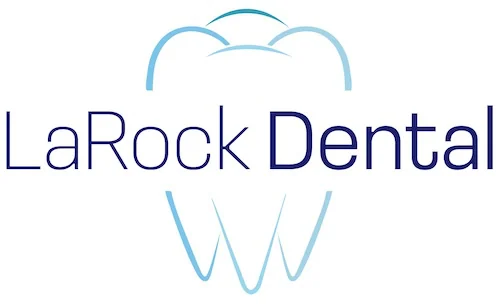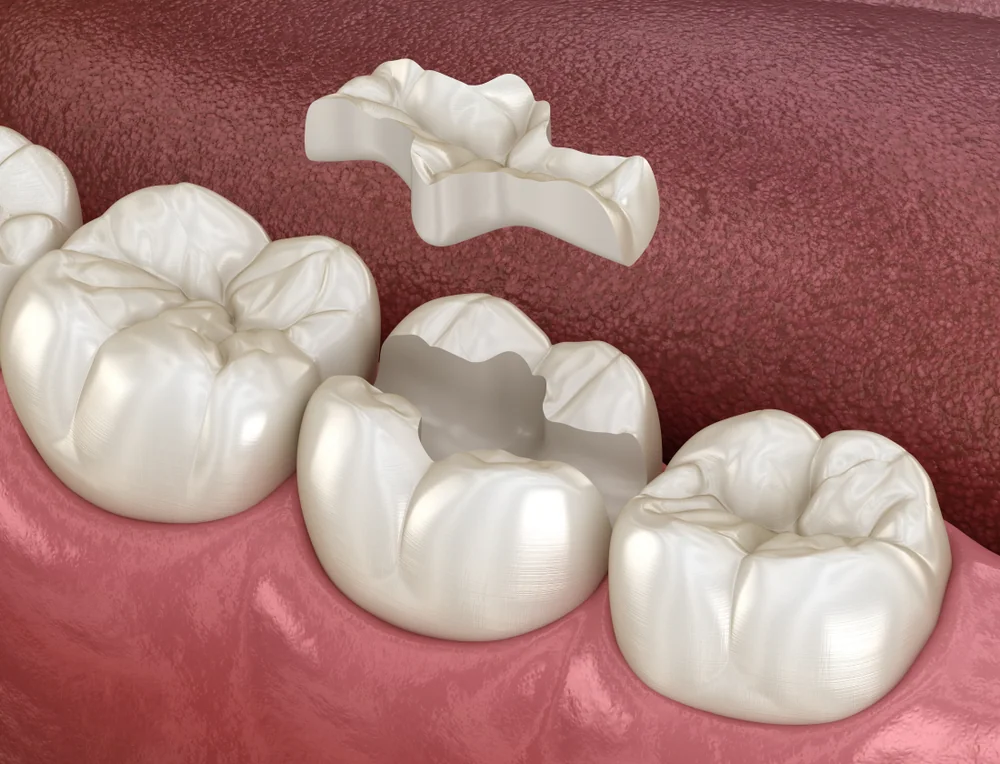Inlays and Onlays
Related to crowns, dental inlays and onlays can be very powerful tools in the fight against tooth decay and damage. You may only know of fillings and crowns as the options for covering up damage after a cavity. Inlays and onlays go beyond the limitations of both options, managing to fit somewhere between them as unique methods of repairing a tooth.
Get acquainted with this particular option for restorative dentistry before your next visit with Dr. LaRock here in Manchester, MI.
How Are Inlays or Onlays Different From Fillings and Crowns?
For many repairs, it’s best to drill out the damaged areas of the tooth and apply a malleable filler material that molds itself to the tooth. When the damage is extensive and there’s a large gap left after drilling, another approach is needed.
Onlays and inlays are made outside of the mouth and carefully designed to fit into the space in the tooth. Then it’s fit into the gap and adjusted until it perfectly fills the space. This is not much different for the patient than the process used for fillings, but the resulting restoration can last significantly longer.
After bonding it to the tooth, you’ll enjoy greater support and better stabilization for a badly damaged tooth. It’s similar to a crown but better able to fill the inside of a tooth, especially with an overlay. Tougher materials can also be used to make durable onlays and inlays that won’t wear out as quickly as fillings would in certain places. Finally, inlays and onlays are attached to a much smoother tooth surface, reducing the chances of decay later underneath the restoration.
What’s the Difference Between Inlays and Onlays?
Since both of these restoration methods are used similarly to fillings, they’re easy to confuse when you first hear of them. Consider the depth of the repair when trying to remember which is which. Inlays are inserted into the top part of a molar or pre-molar, going a little deeper to fill in the folds and ridges of the teeth. This works well when there’s too much damage for a filling but too little damage to justify a whole crown.
Onlays cover the entire top of the tooth, still primarily used on molars and pre-molars. This covers all the edges that meet with other teeth, protecting them from chipping and fracturing damage in weakened teeth. That’s something a simple filling can’t so easily accomplish. It’s also why this technique is called a partial crown by some dentists. Dr. LaRock will let you know if a filling, crown, inlay, or onlay is the right way to deal with a particular cavity.
We pride ourselves on honest and accurate treatments recommendations for our patients here at LaRock Dental. If you need an inlay or onlay, we’ll explain why we believe it’s the best option for your particular dental health concern.
Visit our Manchester office any time you suspect an issue with a cavity or dental decay so we can halt the damage and help you choose the right fix.
Request An Appointment Today
If you’re looking for compassionate and quality dental care in Manchester, MI, you can rely on LaRock Dental and the caring team under Dr. LaRock.
Testimonials
We Love Hearing From Our Patients

Front desk staff, dental hygienist and doctors were pleasant and professional.
– Gerald M.

“My hygienist was amazing and dentist was excellent. Highly recommend!”
– Brent L.

“Great small town practice with a caring staff.”
– Michael B.
 126 East Main Street Manchester, MI 48158
126 East Main Street Manchester, MI 48158 734-428-8323
734-428-8323

